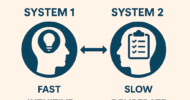We chat about the day, as I use a sharp knife to cut into her. We joke about my kids, as the blood is spurting. We reminisce about our friendship, as I rip open her tissue.
For most surgeons, their patients are asleep as they perform their surgery. In obstetrics, however, we want our patients awake, not only to witness their baby’s arrival, but also because it is safer. When I step back, it is a surreal moment, to be inside someone’s body while also talking with them. It is particularly challenging when it is one of your closest friends, and it is one of the hardest deliveries you have ever performed.
When she came for her first appointment, I performed an ultrasound. I struggled to see around a fibroid the size of a grapefruit to see the heartbeat of her 4 mm fetus. In the first trimester, her hormones were raging and so were her emotions. Doubt, panic, fear reared its ugly head, but steadily she made it through. In the second trimester, she began to enjoy the pregnancy and had a glow about her. Unfortunately, as her baby grew, so did the fibroid. By the time she was halfway through the pregnancy, it had grown to nearly 10 centimeters. In the third trimester, she now looked like she was carrying twins, the fibroid growing with the same speed as the baby. We joked about the fibroid and her naming it George, but the doctor in me became fearful of the complications this fibroid could cause. By the time she was near her due date, the fibroid was bigger than the baby’s head at 14 centimeters, and was completely blocking the birth canal. In addition, the location of the fibroid was exactly where an incision is made at a C-section, leaving little safe options for delivery.
When scheduling her C-section, I had made sure I had a senior resident, blood available if a transfusion was needed and a backup attending in the wings if things went south. I arrived at the hospital and cheerfully greeted my friend and her husband in pre-op. They both were so excited to meet their daughter, the upcoming danger unbeknownst to them.
In the operating room, I hold my friend’s hand as she is getting her spinal, trying to distract her with small talk. Once she is lying down, I go out to scrub. I return, gown up and stand by her side, the resident opposite of me. After we test that the spinal is working, I take a deep breath, and we start.
Unfortunately, because of the fibroid, the incision on her belly is big, we have to go around and above her belly button. We go thru the layers underneath quickly until we reach the uterus. The fibroid looks enormous, covering nearly the whole front of the uterus and there are blood vessels the size of hoses feeding it. We have to stop at that moment to strategize where we can make a uterine incision. We need to avoid the fibroid and large blood vessels or risk uncontrollable bleeding, but also having enough room for the baby to be delivered. I am aware my friend can hear everything, so I talk softly. She is chatting with her husband at the moment.
We decide to make a J-shaped incision off to one side. The uterus is thick because she has not had any contractions and it takes several strokes of the scalpel to finally enter. The clock is ticking now — once the uterine incision is made, you need to get the baby out quickly, but we have to figure out how to deliver the baby through this unusual incision. Normally, the incision is level with the head, and you lift the head out and push on the mom’s belly to deliver the rest. We were more at the level of the baby’s chest and couldn’t reach the head.
I can feel the sweat running down my back as I reach inside the uterus and find the baby’s feet. I quickly rotate the baby to bring her out breech. My heart is pounding. “Please cry, please cry” is all I can think as I hand the baby off to the nurse, knowing the baby is depressed and stunned from the delivery. She is whisked off to the warmer and finally there it is, a loud wail.
For a moment I smile, then I look back at this gaping hole in the uterus that is bleeding like crazy. My friend is talking to me, excited to hear her baby. I’m trying to remain calm in the face of my friend possibly bleeding out. We are trying to suture the uterus, but the blood keeps welling up making visualization difficult. I know if we can just get this first layer closed, we will be in good shape. With all hands on deck, suctioning, sponging, throwing a stitch whenever we could see clearly, we slowly move along. I am aware the suction canister is filling up, which indicates we have lost a liter of blood, and now we are on to the second canister.
The anesthesiologist decides to check her blood count as he sees the large amount of blood loss. My friend is talking to me again, and I can barely register what she is saying. All I can think about is that I can’t lose her, that I love her, I need to work faster. It seems like an eternity, although in reality, it is just a few minutes, when we finally have control of the bleeding and the first layer is done. The uterus is still oozing in spots, but that is manageable. We have to do a second and third layer of suturing anyway to make a strong closure. At that moment, I realize I haven’t been breathing and suddenly take a deep breath. As the scrub nurse hands me the next suture, I chat with my friend for a moment. The C-section is not over, but the worst of the battle is done.
The rest of the C-section goes smoothly. There was a huge amount of blood loss, about twice that of a normal C-section. Although my friend is tough, this extra burden of a difficult surgery, will make for a rough start. In the recovery room, I try to explain this to her, but I can see she can’t hear me at that moment, she can only focus on her daughter. There will be another time for this discussion, for now she just needs to embrace her new motherhood and expanded family. I walk away completely drained, the enormity of holding these two lives through the surgery slowly ebbing away.
Andrea Eisenberg is a obstetrician-gynecologist.
Image credit: Shutterstock.com



























![Rethinking patient payments: Why billing is the new frontline of patient care [PODCAST]](https://kevinmd.com/wp-content/uploads/Design-3-190x100.jpg)





![Empowering IBD patients: tools for managing symptoms between doctor visits [PODCAST]](https://kevinmd.com/wp-content/uploads/Design-2-190x100.jpg)

